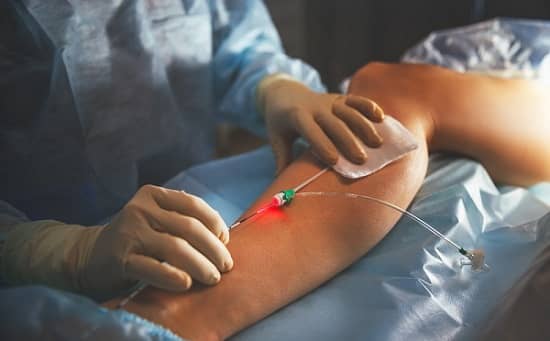A condition known as varicose veins occurs when the veins in the legs become twisted, swollen, and protrude from the surface of the skin, allowing them to be seen plainly through the skin. They are usually located near a person's feet or legs, although not always.
Varicose veins can be treated in a variety of ways, based on the veins that are affected & the severity of symptoms. They can be removed surgically in order to relieve the suffering of the individual who has been impacted. Because the blood is rerouted to other healthy veins, there is no interruption in the supply of blood.

Surgery for varicose veins can be performed in a variety of ways, including:
Vein stripping is a procedure in which the afflicted vein is removed from the body, as the name implies. With the use of a wire, it is drawn out of the body through an incision in the groyne area.
Phlebectomy: Instead of making a specific major cut along the vein, multiple minor cuts are performed along the vein during this surgery. It is then drawn out and chopped into many pieces using a sharp knife.
The estimated value of Varicose Veins Treatment in India is between Rs. 36,719 and Rs. 2, 75,000 (roughly). The prices may also vary based on the hospital.
If the situation is not severe, it is first recommended that the patient adopt conservative treatment approaches to keep the sickness from spreading. Compression stockings, exercise, and leg elevation are some of the options available to you. If these methods fail to provide satisfactory results, the patient is urged to pursue one of the surgical therapy alternatives available.
Before the surgical treatment, the patient will receive a spinal or general anesthetic to relax him or her. In order to get to the ankle, the surgeon must make several cuts from the groyne to the ankle. After dissecting the leg, the sick veins beneath the skin are discovered. This is accomplished by passing the strippers through the infected veins and then pulling the stripper out with the sick veins.
A local anesthetic is administered to the patient prior to the operation to numb the spot. This method does not necessitate the creation of an incision. It is necessary to inject a thin fiber into the injured vein through a small entry hole in the skin.
The fiber generates energy through laser light once it is drawn back into the vein. The tissues that were targeted react to the light energy using exceptional precision, with no adverse effects on the surrounding tissues or organs. It has the effect of causing the injured vein to close shut.
This is due to the fact that these veins are shallow and only carry a tiny amount of blood; therefore, the limited blood flow to the veins is diverted to the other healthy veins.
Varicose Veins Treatment Frequently Asked Questions
Q1. What Lifestyle Chances Does One Need To Make To Prevent Varicose Veins Or Spider Veins From Reappearing?
Ans: Well if you don’t want the varicose veins to reappear, then you’d have to follow a healthy lifestyle. For example, if your daily routine doesn’t include exercising, make sure to change that from now on. The prime reason behind getting varicose veins is that the blood starts to get blocked inside the veins because the valves in the veins don’t work as they should. And that mostly happens because of the lack of exercise in one’s lifestyle.
Q2. What Are The Minimally Invasive Treatment Options For Varicose Veins?
Ans: Sclerotherapy is one such minimally invasive treatment option that can be useful for someone suffering from varicose veins or spider veins. However, in severe cases, you’d have to go for varicose veins surgery. Sclerotherapy is quite useful when the varicose veins symptoms have just started to show, or if you have smaller spider veins. During sclerotherapy, the doctor injects a chemical solution into the veins to make them collapse and disappear.
Q3. What Does The Diagnosis Procedure Look Like When Having Varicose Veins?
Ans: During the first appointment with the doctor, you’ll be put through a physical examination procedure to check the severity of your case. In some severe cases, the doctor may recommend or refer you for an ultrasound test. An ultrasound test is mostly performed to check for blood clotting in the veins. Other than that, if the doctor may suspect any other diseases or conditions related to varicose veins, in that case as well, you’d be referred to a thorough ultrasound test.